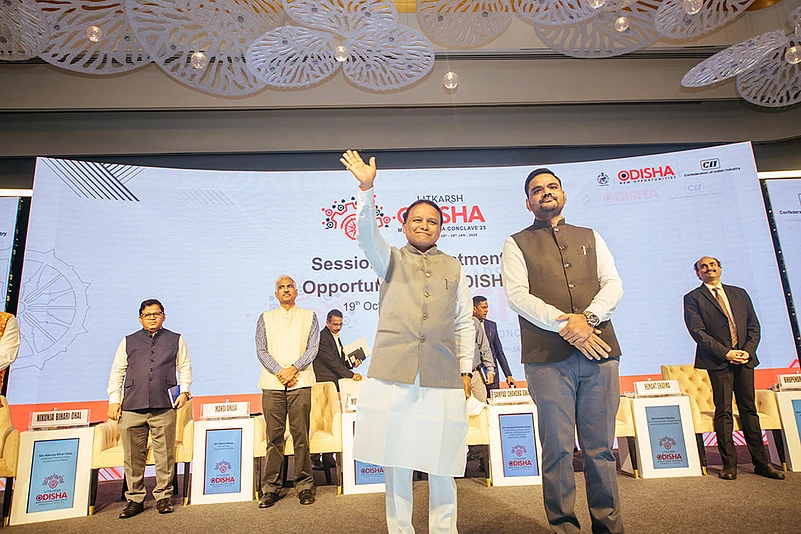In less than a year since the new administration took office, Odisha has charted a strategic shift in its industrial trajectory, firmly anchored in inclusive growth, long-term infrastructure, and global partnerships.
Under the leadership of Chief Minister Mohan Charan Majhi, the state’s Department of Industries has accelerated the translation of policy into execution, positioning Odisha as both an investment magnet and a case study in balanced regional development.
From Policy to Projects: A Year of Tangible Industrial Progress
The state’s flagship event, the Utkarsh Odisha – Make in Odisha Conclave 2025, was a definitive signal of renewed industrial ambition. Held in January 2025, it attracted investment proposals worth ₹16.73 lakh crore across 20 sectors, potentially generating 12.88 lakh jobs.
With 145 high-impact MoUs signed, spanning industries from petrochemicals to IT, tourism, and renewables, the conclave showcased Odisha’s appetite for scale and scope.

Global engagement was robust. Delegations from 16 countries, including Singapore, Malaysia, and Australia, were not mere spectators but participants in Odisha’s evolving industrial landscape.
The conclave drew over 10,000 business delegates and 50,000 attendees, underlining not just optics but operational momentum.
Project approvals have followed swiftly. Between November 2024 and May 2025 alone, the State Level Single Window Clearance Authority (SLSWCA) and the High-Level Clearance Authority (HLCA) approved projects worth over ₹3 lakh crore, with employment potential exceeding 1.3 lakh jobs. These span a wide spectrum—steel, ESDM, pharmaceuticals, apparel, green energy, and more.
“This is not investment by press release, but by policy and planning. Odisha’s industrial vision is rooted in long-term value creation — not just jobs, but livelihoods; not just investors, but citizens.”
Major firms such as Nestlé India, Varun Beverages, and the EPIC Group have committed significant investments in Khordha, Odisha’s emerging manufacturing hub.
In April 2025, Chief Minister Majhi inaugurated 14 new industrial projects in the district, with an outlay of ₹5,770 crore and the potential to create over 37,000 jobs.

Kalinganagar and Beyond: Clusters That Catalyse Transformation
The Kalinganagar Industrial Complex has emerged as a cornerstone of Odisha’s reimagined industrial policy. In May 2025, foundation stones and inaugurations were undertaken for 24 projects, amounting to ₹1.15 lakh crore.
Tata Steel’s ₹47,599 crore expansion and Neelachal Ispat Nigam’s ₹61,769 crore plant reflect a concentration of high-value investment in core sectors.
However, the Kalinganagar model is more than a collection of projects. It is an integrated ecosystem. MSMEs are plugged into the value chain, procurement is linked to state policy, and local workforce training is integrated via the Skilled in Odisha programme. This includes tribal participation, reinforcing the administration’s emphasis on inclusive employment.
Grounding Big Bets with Start-up Support and MSME Strength
Odisha’s industrial revival is not predicated solely on mega investments. Its start-up and MSME ecosystems are receiving parallel attention.
In FY 2024–25, over 2,000 start-ups were formally recognised, and ₹25.48 crore disbursed in incentives. Start-up schemes supporting incubation, product development, and market access are complemented by the ₹25 crore Odisha Startup Growth Fund.
Thirty multiproduct MSME Parks are under development, with land identified for 14. Simultaneously, key industrial estates in Jagatpur, Khurda, and Mancheswar are undergoing infrastructure upgrades with an allocation of ₹152.30 crore, ensuring decentralised growth.
Green Growth and Global Gateways: Odisha’s Emerging Industrial Identity
Odisha’s international investor outreach has become markedly more strategic. Since July 2024, the state has conducted over 150 one-on-one business meetings, including with global leaders such as Google, Marico, TVS, Mankind Pharma, and Adobe India.
MoUs with Singaporean firms are driving new-age infrastructure. From a green shipping corridor in Paradip to a smart, sustainable city near Bhubaneswar, in partnership with IDCO and Sembcorp. These are not simply infrastructure announcements, but indicative of the state’s green industrial strategy.
Investment is now flowing into sectors such as green hydrogen, ESDM, technical textiles, and semiconductors. Already, 20 major green projects worth ₹1.36 lakh crore have been cleared. The sectoral composition of the state’s GSDP reflects this transition: manufacturing and services are projected to contribute 35% and 37% respectively in 2024–25, reducing the state’s historical reliance on mineral extraction.
A Strategic Architecture for Future Growth
What distinguishes Odisha’s industrial evolution is its clear institutional architecture. Nearly 95% of its ₹915 crore departmental budget in FY 2024–25 has been channelled into tangible assets like logistics parks, workforce housing, textile parks, and effluent treatment facilities. This capital allocation underlines a developmental approach that is both economic and social.
With a vision that balances investment with inclusion, and ambition with sustainability, Odisha is not merely chasing numbers, but laying the foundation for generational growth.
























